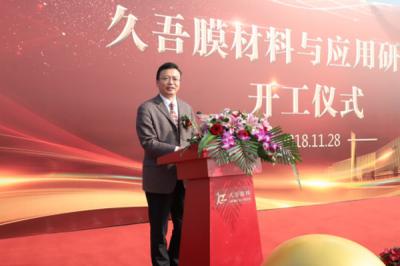Ceramic membrane, also known as inorganic ceramic membrane, is a solid membrane material in the membrane separation technology. It is mainly made of different specifications of inorganic ceramic materials such as alumina, zirconia, titanium oxide, and silicon oxide as supporting bodies, which are coated on the surface and baked at high temperature. Ceramic membrane housings are not uncommon in the pharmaceutical industry because of their convenient operation, energy saving, and no new environmental pollution. Especially in the extraction of effective ingredients in traditional Chinese medicine, separation and recovery of protoplasts, enzymes, microorganisms, and clarification of fermentation broth, it is one of the necessary technologies.
The components of traditional Chinese medicine extraction contain complex components, including multiple effective ingredients, ineffective ingredients, and toxic ingredients. Traditional Chinese medicine extraction is an important link in traditional Chinese medicine production. Extracting effective components from traditional Chinese medicine and obtaining effective monomers through separation and purification are important contents in the field of traditional Chinese medicine research. Traditional Chinese medicine extraction has problems such as long heat concentration time, high labor costs, low production efficiency, and low product purity due to technical limitations. The application of ceramic membrane separation technology has opened up a low-energy, low-cost mode of traditional Chinese medicine separation and purification.
The application of ceramic membrane housings in traditional Chinese medicine extraction and fermentation broth mainly plays a role in intercepting bacteria, particles, large molecular impurities (such as gum, tannin, protein, and polysaccharide) or decolorization. Refining the traditional Chinese medicine extraction liquid through ceramic membrane housings can further separate and purify its effective ingredients, which can greatly maximizes the effectiveness of traditional Chinese medicine extraction liquid.
Compared with organic nanofiltration membranes, ceramic membrane modules have advantages such as good thermal stability, good chemical stability, a wide range of applicable pH values, good mechanical properties, long service life, and easy rinsing, which are especially suitable for places where organic membranes are not suitable. Compared with traditional Chinese medicine water-alcohol precipitation processes, ceramic membrane modules have advantages such as no phase change, less water consumption, 100% interception of target substances, simple process, and convenient operation.
The technical advantages of ceramic membrane modules in tea polyphenol extraction are as follows:
The ceramic membrane separation process has no chemical reaction, which does not destroy the bioactivity, does not require heating or conversion, and can avoid oxidation loss of tea polyphenol active ingredients, thereby increasing the yield.
Ceramic membrane modules have a high interception rate of tea polyphenols, and the concentrated permeate can be recycled for reuse, reducing water consumption costs.
Simplified the process, and concentrate at room temperature, reduced loss of physiologically active ingredients and energy consumption.
China's tea industry has achieved rapid development from production to marketing and consumption. The terminal form of tea is becoming increasingly diverse, and the marketing channels and combinations are becoming more diversified. Since the beginning of the 21st century, the development of tea polyphenol industry has significantly increased the demand for technology. The application of ceramic membrane modules in the tea polyphenol extraction process not only improves the extraction rate of tea polyphenols, but also improves the quality of tea polyphenols and realizes mechanized processing. The scale of tea polyphenol processing industry characterized by new technology industrialization has expanded.




 +86-25-58849045
+86-25-58849045
 +86-25-58749295
+86-25-58749295
 jiuwu@jiuwu.com
jiuwu@jiuwu.com
 No. 9 Park Road, Pukou District, Nanjing City (Sanqiao Factory)
No. 9 Park Road, Pukou District, Nanjing City (Sanqiao Factory) Call us on:
Call us on:  Email Us:
Email Us:  No. 9 Park Road, Pukou District, Nanjing City (Sanqiao Factory)
No. 9 Park Road, Pukou District, Nanjing City (Sanqiao Factory)

 English
English 한국어
한국어 français
français русский
русский Español
Español

